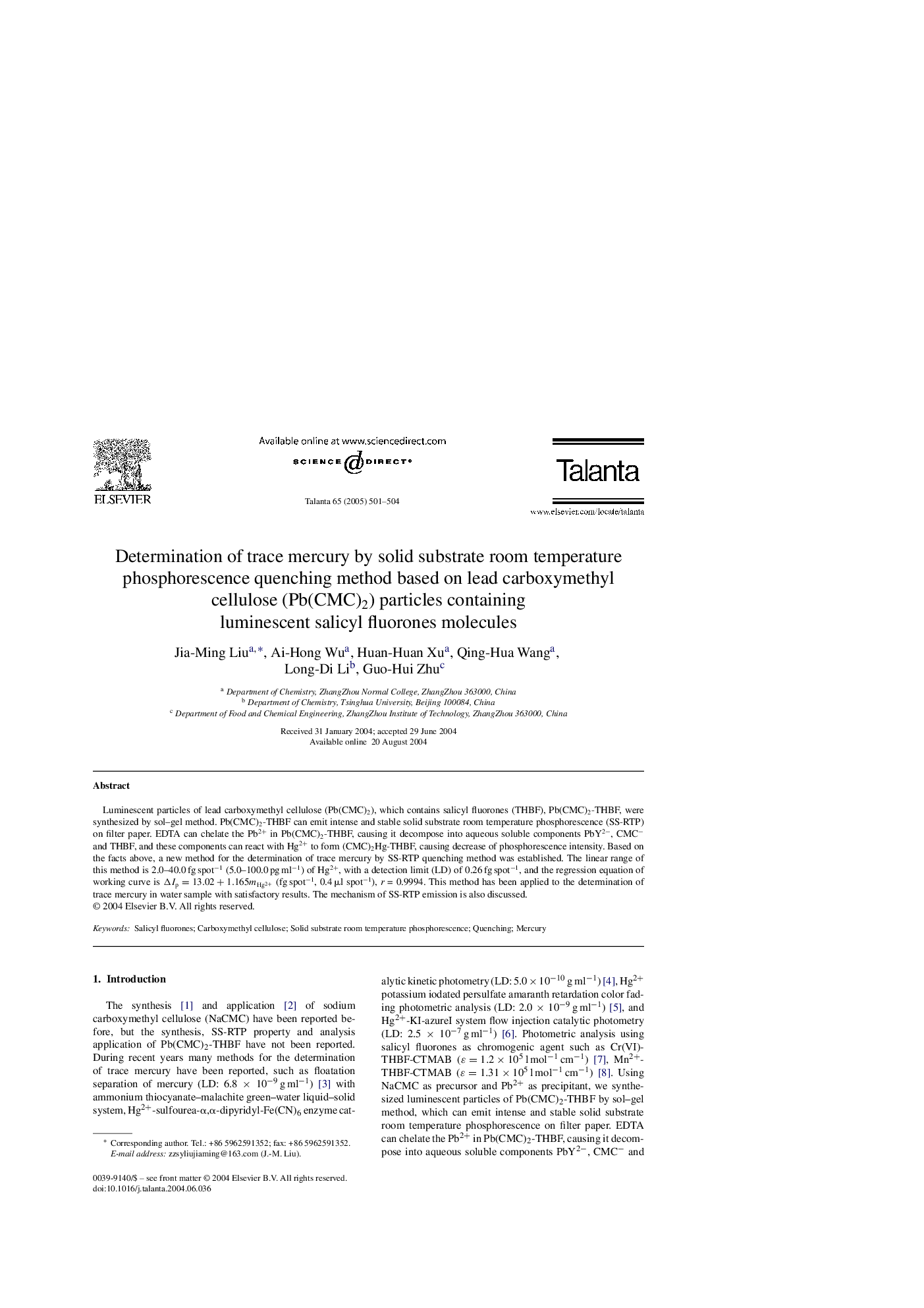| کد مقاله | کد نشریه | سال انتشار | مقاله انگلیسی | نسخه تمام متن |
|---|---|---|---|---|
| 10560080 | 969703 | 2005 | 4 صفحه PDF | دانلود رایگان |
عنوان انگلیسی مقاله ISI
Determination of trace mercury by solid substrate room temperature phosphorescence quenching method based on lead carboxymethyl cellulose (Pb(CMC)2) particles containing luminescent salicyl fluorones molecules
دانلود مقاله + سفارش ترجمه
دانلود مقاله ISI انگلیسی
رایگان برای ایرانیان
موضوعات مرتبط
مهندسی و علوم پایه
شیمی
شیمی آنالیزی یا شیمی تجزیه
پیش نمایش صفحه اول مقاله

چکیده انگلیسی
Luminescent particles of lead carboxymethyl cellulose (Pb(CMC)2), which contains salicyl fluorones (THBF), Pb(CMC)2-THBF, were synthesized by sol-gel method. Pb(CMC)2-THBF can emit intense and stable solid substrate room temperature phosphorescence (SS-RTP) on filter paper. EDTA can chelate the Pb2+ in Pb(CMC)2-THBF, causing it decompose into aqueous soluble components PbY2â, CMCâ and THBF, and these components can react with Hg2+ to form (CMC)2Hg-THBF, causing decrease of phosphorescence intensity. Based on the facts above, a new method for the determination of trace mercury by SS-RTP quenching method was established. The linear range of this method is 2.0-40.0 fg spotâ1 (5.0-100.0 pg mlâ1) of Hg2+, with a detection limit (LD) of 0.26 fg spotâ1, and the regression equation of working curve is ÎIp=13.02+1.165mHg2+ (fg spotâ1, 0.4 μl spotâ1), r = 0.9994. This method has been applied to the determination of trace mercury in water sample with satisfactory results. The mechanism of SS-RTP emission is also discussed.
ناشر
Database: Elsevier - ScienceDirect (ساینس دایرکت)
Journal: Talanta - Volume 65, Issue 2, 30 January 2005, Pages 501-504
Journal: Talanta - Volume 65, Issue 2, 30 January 2005, Pages 501-504
نویسندگان
Jia-Ming Liu, Ai-Hong Wu, Huan-Huan Xu, Qing-Hua Wang, Long-Di Li, Guo-Hui Zhu,